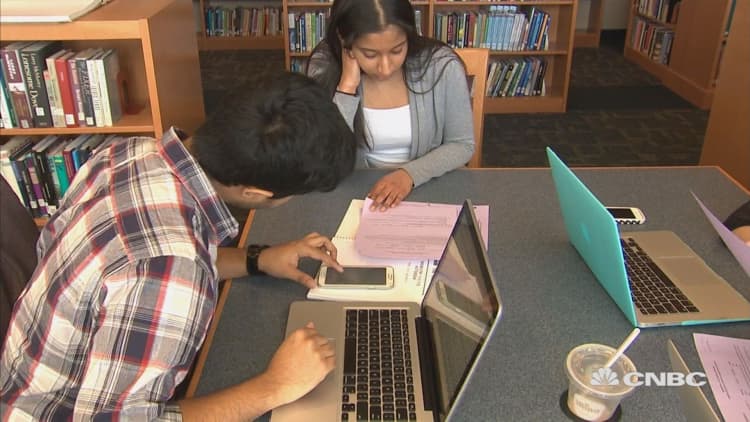
When it comes to applying to college, there is only one notification more significant than being accepted: the financial aid letter.
But unlike getting in, it's rarely black and white.
Financially, a lot is at stake. With college expenses steadily increasing, affordability is the No. 1 concern for this year's crop of high school seniors.
At public, four-year institutions, costs for the 2017-18 school year hit $20,770, according to the College Board. Tuition plus room and board at four-year private universities was much higher: $47,000, on average, in the current academic year.
However, about two-thirds of all full-time students receive aid, which can bring a school's sticker price significantly down.
Your net price is a college's tuition and fees minus grants, scholarships and education tax benefits, according to the College Board.
The first thing families should do is take the time to understand the financial aid award letter, said Ellen Roberts, a spokeswoman for Sallie Mae, which provides loans to students.
"It's tempting to look at the bottom line, but look at what makes up that number — how much of that is student loans that you will have to repay and how much is grants and scholarships that you won't have to repay."
"You want to maximize the amount of free money," Roberts said. For that reason, "bigger is not always better."
Still uncertain? Call the financial aid office and ask to go through the award letter line by line, advised Christopher Rim, CEO and president of Command Education, a college consulting firm in New York.
"I encourage all students to do that to get a full understanding of what's actually owed by students and their parents," he said.
In addition, he said, "you don't have to accept everything that's in the offer, you can pick and choose." And "you can negotiate," he added.
Schools are often receptive to appeals for more aid, they just don't advertise it.
For more on how to assess aid offers ahead of "decision day," see the infographic below.




